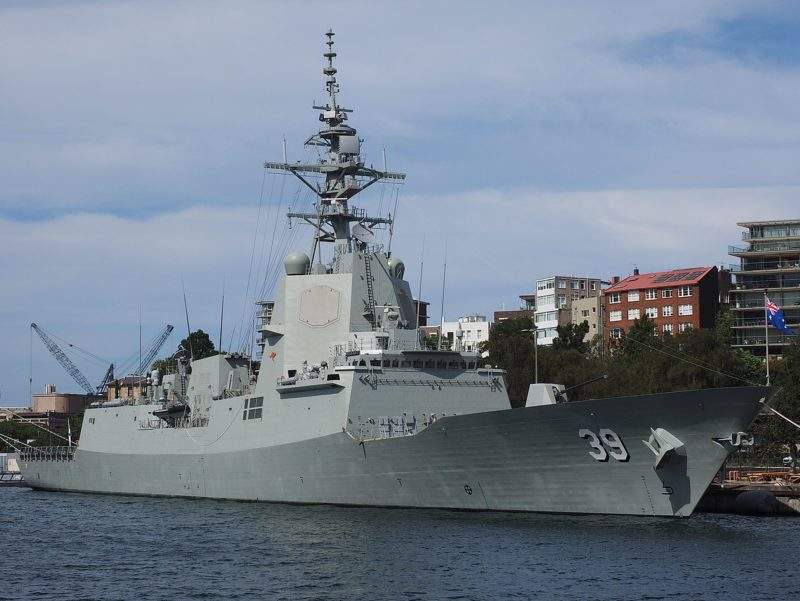
Overview of the SEA 5000 Program Building Australia’s Frigates
In 2015 the Australian Government announced that a plan to replace the country’s ageing Anzac-class frigates – ‘Project SEA 5000’ also known as the Future Frigate Program – will kick into gear in 2019-2020, five years earlier than initially expected.
This was more than just a naval replacement programme, the government wanted to re-ignite the Australian shipbuilding industry, meaning as part of the forthcoming competitive evaluation process, companies hoping to win the SEA 5000 contract would need to demonstrate not only an enduring naval warship design, but also local and national industrial support.

Discover B2B Marketing That Performs
Combine business intelligence and editorial excellence to reach engaged professionals across 36 leading media platforms.
Above all, the government specified that new vessels needed to be designed and equipped with anti-submarine warfare (ASW) capabilities in response to the languishing ASW proficiency of Australian vessels, and heightened submarine activity in the region.
By April 2016 three contenders had been announced for the Future Frigate project: Navantia with its F5000 design, Fincantieri with a modified variety of its FREMM multipurpose frigate, and BAE Systems with its Type 26 Global Combat Ship.
Navantia: F5000

Image: Nick-D.

US Tariffs are shifting - will you react or anticipate?
Don’t let policy changes catch you off guard. Stay proactive with real-time data and expert analysis.
By GlobalDataSpanish shipbuilder Navantia has history in Australia. Its F-100 Hobart class destroyers are currently under construction for the Royal Australian Navy, and for the Future Frigate competition the company are pitching a further evolution of the ship’s design – the F5000. Navantia’s history in the region plays to the company’s favour, but the age of the vessel’s design, and the fact that the F-100 is not a native ASW ship, has raised doubts as to its efficacy.
Navantia’s vessels already form a significant part of the Australian naval fleet, but the history of the Hobart-class destroyer has led to continued concerns of Navantia’s reliability for this project. The F100 design was chosen for Australia’s SEA 4000 Air Warfare Destroyer (AWD) project, but vessel delivery suffered from major delays of over three years, and came in severely over-budget.
Navantia Australia chairman Warren King has said, however, that the issues with the F100 production would not apply to the F5000, as although the AWD project was a Navantia design, shipbuilding was initially carried out by governmental body ASC, and once Navantia took over, the project met every revised budget and scheduling target.
He also states that where the previous project had been held up by the adaptation process, the F5000 design had already been adapted to Australian design standards.
Fincantieri: Modified FREMM

Image: Fabius1975.
The largest shipbuilder in Europe, Italian maritime specialists Fincantieri recently became the fourth largest shipbuilding company in the world, with the acquisition of Vard in 2013 and 50% of STX France in 2018. Despite its global presence, Fincantieri is still relatively unknown in Australia in a military naval capacity.
Fincantieri’s offering to the Future Frigate competition is a slightly modified version of its FREMM multipurpose frigate. The FREMM warship is known in Italy as the Bergamini class, and in France as the Aquitaine class, and comes in both ASW and general purpose varieties. The company has claimed that relatively few modifications to the existing FREMM model would be required in order to suit Australian specifications.
Italy has already ordered four of the ASW variants, and six general purpose vessels, and in 2017 Fincantieri docked a FREMM frigate in Adelaide to personally demonstrate the ship’s viability, leading Australian Defence Industry Minister Christopher Pyne to remark: “One of the advantages for this company is this vessel has been built, it is already in operation,” though countered with: “One of the disadvantages is that the company doesn’t operate here.”
Crucially, the FREMM offering is the only of the three competing designs to feature dual hangers on-board, allowing for two separate helicopters to be embarked.
BAE Systems: Type 26

Image: BAE Systems.
While BAE claims the Type 26 will offer the best ASW performance of the three contending pitches, the UK-based company suffers from the fact that no completed model of the ship is available to demonstrate the fact. The Type 26 is the newest of the designs on offer among the three companies; however the actual design process has reportedly been ongoing for years.
BAE has the advantage that their vessel has been designed from the outset for ASW, but still has anti-aircraft, and ballistic missile defence capabilities. Considering that Australia’s Future Frigates will patrol the oceans for years to come, the advanced nature of BAE’s designs could swing favour.
The Type 26 was first designed in 1998 for the UK Royal Navy, to replace Type 22 and Type 23 frigates; the UK Government announced the purchase of several vessels in 2010, though repeated delays have meant first construction only began in 2017.
BAE Systems Australia SEA 5000 managing director Nigel Stewart has suggested that the fact that construction is underway in the UK can be seen as a positive for the Future Frigate proposition. “We look at the first SEA 5000 vessel as the fourth of class. It is definitely not the first of class… It will still be a very modern ship, but the UK is going to pick up the development costs and risks in the first of class.”





